This grisly burial pit uncovered in southern Mongolia holds the remains of roughly two dozen warriors who were violently executed during the Han-Xiongnu Wars in the second century B.C.E.
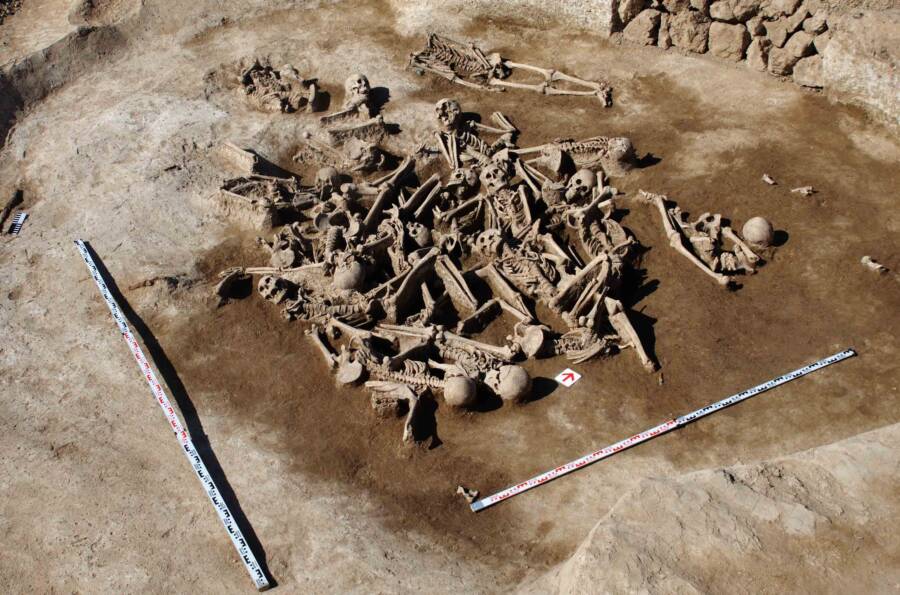
Alexey KovalevThe Han warriors buried in this mass grave found in southern Mongolia all seem to have died in gruesomely violent ways.
More than 2,000 years ago, a terrible massacre took place on the edge of a fortress in present-day Mongolia. A group of men were butchered, then buried in a mass grave.
But until recently, archaeologists weren’t sure who controlled the fortress — or who was buried in this grisly pit. However, a new DNA analysis of the bones has finally shed light on this violent slaughter.
According to a new study, the men who were dismembered and buried in the mass grave were Han warriors who seemingly lost their lives during the Han-Xiongnu Wars in the second century B.C.E. This, in turn, lends credence to the theory that the fortress belonged to the Han, and could be the historic lost fortress known as Shouxiangcheng.
Analysis Of The Ancient Mass Grave Found In Southern Mongolia
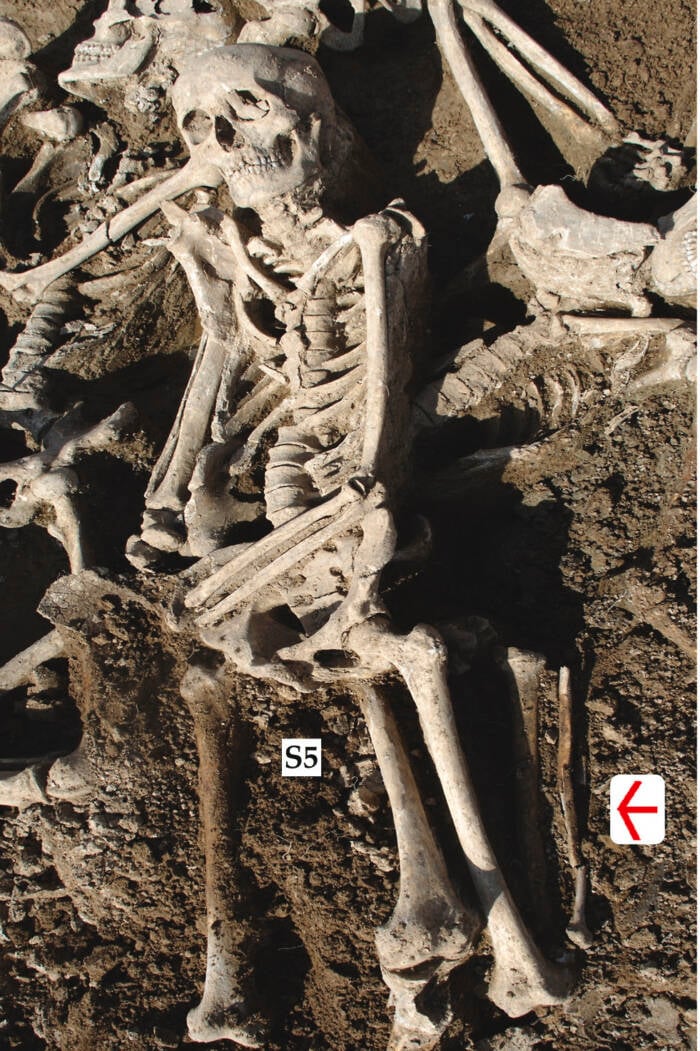
Alexey KovalevOne of the Han warriors buried in the pit located near the Great Wall of China.
The focus of the study, recently published in the Journal of Archaeological Science, was the archaeological site of Bayanbulag in southern Mongolia, not far from the Great Wall of China. This was the site of an ancient fortress, largely believed to have been controlled by the Han. Sixteen years ago, archaeologists working at the site found a mass grave in a nearby streambank containing 20 skeletons and 33 body fragments.
Archaeologists determined that there were at least 17 people in the grave, and perhaps more than two dozen. They were all men between the ages of 20 and 50 years old, and they’d all died violent deaths, with many dismembered.
“Judging by the poses of these people, they were kneeling when they were killed, or lying [down],” study co-author Alexey Kovalev told All That’s Interesting in an email. “One was lying on his back and trying to cover himself with his hands, so his arms and legs were cut off, so he stiffened in rigor mortis. [Another’s] head was cut off and taken away as proof of victory.”
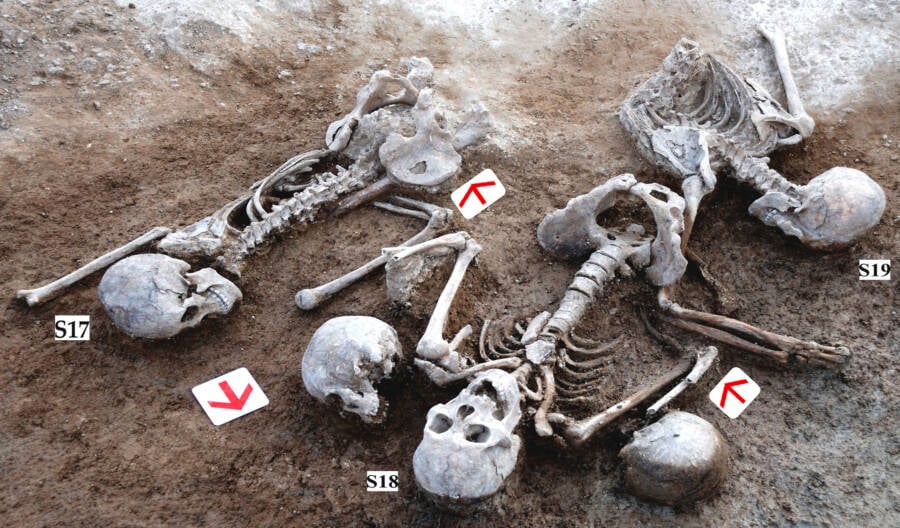
Alexey KovalevThe skeletons reveal that many of these men died grisly deaths via dismemberment.
Indeed, archaeologists suspected that the men had been butchered during one of the many clashes between the Han and the nomadic Xiongnu people that took place during this era. But were the men in the mass grave Han or Xiongnu?
Uncovering The Story Of The Slain Han Warriors And The Fortress They Protected
In order to investigate the identity of the men in the mass grave, the researchers turned to analysis of DNA and isotopes in the bones.
By studying the DNA from 14 of the skeletons, the researchers were able to determine that they resembled populations from the Yellow River Basin in China. What’s more, the isotopes in their bones — which can offer clues about where someone grew up — revealed that the men in the mass grave did not come from the Mongolian Plateau. Unlike the nomadic Xiongnu, who ate mostly meat and dairy, the dead men’s diets consisted of plants and meat.
In other words, the men in the grave were likely Han warriors. Archaeologists believe that they were a squad of Han fighters who were attacked and dismembered by Xiongnu warriors some 2,100 years ago.
This lined up with the researchers’ hypothesis about the grave. As Kovalev told All That’s Interesting: “Execution by dismemberment was the most shameful form of execution for Chinese. [So] it is very unlikely that the Chinese themselves dismembered their comrades.”
Indeed, the researchers saw signs that the Han tried to care for their fallen men. They seemingly tried to collect all the pieces of the soldiers’ bodies to bury them together, hoping, perhaps, to allay the shame of dismemberment.
“[T]hose who buried these soldiers tried to make them feel good in the afterlife,” Kovalev explained to All That’s Interesting. “It is significant that all the small pieces of severed arms and legs, severed heads and other pieces of human bodies were collected for burial. In addition, they put a halberd and a cheekpiece, symbolizing their military service (most likely in the cavalry). As for the actions of the enemies, we clearly see the atrocities of the Xiongnu.”
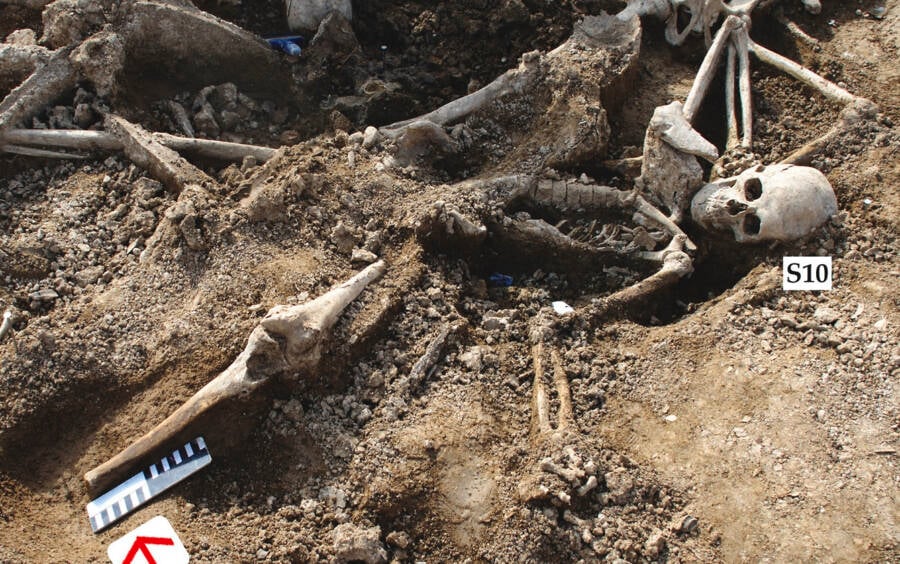
Alexey KovalevBy analyzing DNA and isotopes in the skeletons, researchers were able to determine where the men had originally come from.
This, in turn, confirms a theory about the fortress itself. Though most researchers have long assumed it was a Han fortress based on artifacts found at the site, this hadn’t yet been proven. Given the identity of the slain soldiers, however, it seems more likely than ever that the fortress belonged to the Han.
Indeed, it may even be the storied fortress known as Shouxiangcheng. This fortress, mentioned in Chinese texts, was built in 104 B.C.E by the Han, during the era of war with the Xiongnu. However, its location had been lost to time.
“The results of our 2009 excavations of the fortress and tomb indicate that Bayanbulag is the Shouxiangcheng,” Kovalev told All That’s Interesting. “It was used as a base for military campaigns against the Xiongnu… The evidence is very strong. We found a huge number of pottery fragments, and they all belong to the Han cultural traditions. We excavated a large building of typical Chinese post-and-frame architecture, which was covered with Chinese-type roof tiles. We found about 250 crossbow arrowheads, about 15 fragments of crossbow locks (trigger-mechanisms), a large number of Han iron tools, bushings, hooks. We also found private seals, coins and other Chinese artifacts.”
He continued: “Our discovery is important because it fully confirms the data from written sources about the role that the Shouxiangcheng fortress played in the war as the main military base of the Chinese army.”
Inside The Bloody History Of The Han-Xiongnu Wars
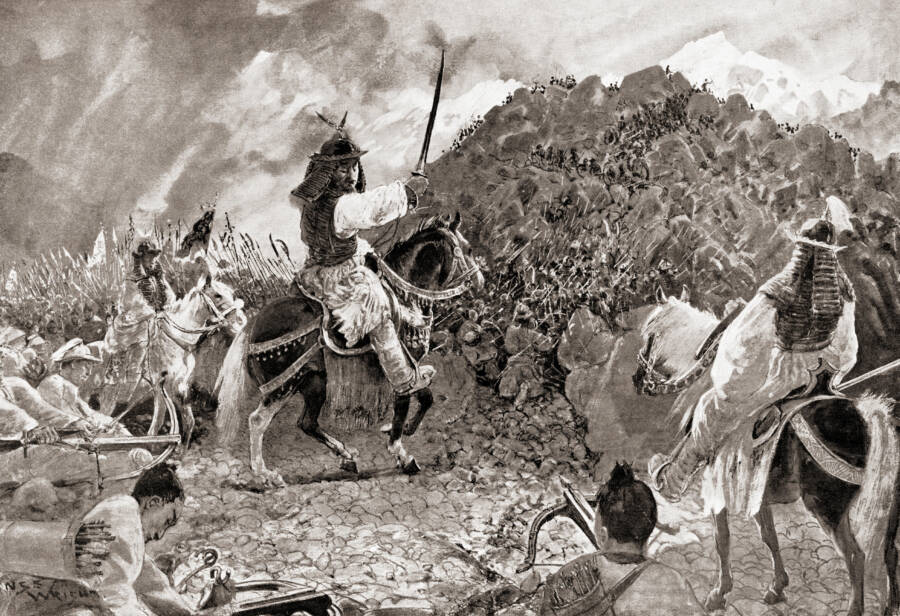
Classic Image/Alamy Stock PhotoA depiction of Han general Li Ling and his army before a battle with the Xiongnu.
The Han-Xiongnu Wars were a series of bloody conflicts between the Chinese Han Empire and the nomadic Xiongnu people. The two groups clashed as early as 200 B.C.E., though the war began in earnest around 133 B.C.E. It lasted for 200 years, and began to wind down around 80 C.E.
The Han emerged victorious, while the Xiongnu forces, largely obliterated, were forced to flee west. But they would have historical revenge, as many of their descendants formed the powerful Huns.
This mass grave found in Mongolia offers a macabre look at this centuries-long conflict. Though the Han eventually won the war, the way the men in this mass grave died helps reveal the brutal cost of victory.
Indeed, archaeologist believe that there’s more to be found at the Bayanbulag site. But they need far more time and funding to fully excavate the area.
“There is at least one more such grave there — we need to study it carefully,” Kovalev told All That’s Interesting. “In addition, we have excavated less than 10 percent of the entire fortress, we need to conduct a larger excavation. Marauders with metal detectors are working at this site, collecting bronze and iron items. It is better to explore the fortress as soon as possible. We also need to restore hundreds of our finds… and fully publish a report on the 2009 excavations. But there is no funding allocated for this or for next excavations. I hope that publication will attract the attention of sponsors and Mongolian government agencies to the importance of this task.”
After reading about the mass grave of Han soldiers found in Mongolia, go inside the ancient Mongolian art of hunting with eagles. Then, look at these photos of life in Mongolia before the Soviet purge.





